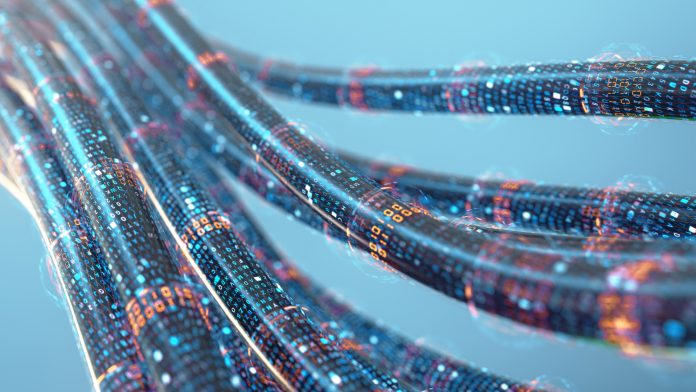University of California, Berkeley engineers have constructed a novel design of a component of transistors that could potentially improve computer energy efficiency.
Computers are slowly becoming both smaller in size and more powerful, however they require a huge amount of energy to be operational. The total amount of energy the US dedicates to computing has risen dramatically over the last decade and is quickly approaching that of other major sectors such as transportation.
In a study published online this week in the journal Nature, University of California, Berkeley engineers describe a major breakthrough in the design of a component of transistors — the tiny electrical switches that form the building blocks of computers — that could significantly reduce their energy consumption without sacrificing speed, size or performance. The component, called the gate oxide, plays a key role in switching the transistor on and off.
“We have been able to show that our gate-oxide technology is better than commercially available transistors: What the trillion-dollar semiconductor industry can do today — we can essentially beat them,” explained Sayeef Salahuddin, the study senior author, and TSMC Distinguished Professor of Electrical Engineering and Computer Sciences at UC Berkeley.
Improving computer energy efficiency
This boost in energy efficiency is made possible by an effect known as negative capacitance, which reduces the amount of voltage that is required to store charge in a material. Salahuddin theoretically predicted the existence of negative capacitance in 2008 and first demonstrated the effect in a ferroelectric crystal in 2011.
This new study demonstrates how negative capacitance can be achieved in an engineered crystal composed of a layered stack of hafnium oxide and zirconium oxide, which is readily compatible with advanced silicon transistors. By incorporating the material into model transistors, the study demonstrates how the negative capacitance effect can significantly lower the amount of voltage required to control transistors, and as a result, the amount of energy consumed by a computer.
“In the last 10 years, the energy used for computing has increased exponentially, already accounting for single digit percentages of the world’s energy production, which grows only linearly, without an end in sight,” Salahuddin commented. “Usually, when we are using our computers and our cell phones, we do not think about how much energy we are using. But it is a huge amount, and it is only going to go up. Our goal is to reduce the energy needs of this basic building block of computing, because that brings down the energy needs for the entire system.”
Adopting negative capacitance into real technology
State-of-the-art laptops and smart phones contain tens of billions of tiny silicon transistors, each of which must be controlled by applying an electric voltage. The gate oxide is a thin layer of material that converts the applied voltage into an electric charge, which then switches the transistor.
Negative capacitance can boost the performance of the gate oxide by reducing the amount of voltage required to achieve a given electrical charge. However, the desired effect cannot be achieved in just any material. Creating negative capacitance requires careful manipulation of a material property called ferroelectricity, which occurs when a material exhibits a spontaneous electrical field. Previously, the effect has only been achieved in ferroelectric materials called perovskites, whose crystal structure is not compatible with silicon.
In the study, the team of engineers revealed that negative capacitance can also be achieved by combining hafnium oxide and zirconium oxide in an engineered crystal structure called a superlattice, which leads to simultaneous ferroelectricity and antiferroelectricity.
“We found that this combination actually gives us an even better negative capacitance effect, which shows that this negative capacitance phenomena is a lot broader than originally thought,” explained Suraj Cheema, the study co-first author and Postdoctoral Researcher at UC Berkeley. “Negative capacitance does not just occur in the conventional picture of a ferroelectric with a dielectric, which is what’s been studied over the past decade. You can actually make the effect even stronger by engineering these crystal structures to exploit antiferroelectricity in tandem with ferroelectricity.”
Negative capacitance effect
The researchers noticed that a superlattice structure composed of three atomic layers of zirconium oxide sandwiched between two single atomic layers of hafnium oxide, totalling less than two nanometres in thickness, provided the best negative capacitance effect. Due to the fact that the majority of state-of-the-art silicon transistors already use a 2-nanometre gate oxide composed of hafnium oxide on top of silicon dioxide, and since zirconium oxide is also used in silicon technologies, these superlattice structures can easily be integrated into advanced transistors.
To test how well the superlattice structure would perform as a gate oxide, the team fabricated short channel transistors and tested their capabilities. These transistors would require approximately 30% less voltage while maintaining semiconductor industry benchmarks and with no loss of reliability, compared to existing transistors.
“One of the issues that we often see in this type of research is that we can demonstrate various phenomena in materials, but those materials are not compatible with advanced computing materials, and so we cannot bring the benefit to real technology,” Salahuddin concluded. “This work transforms negative capacitance from an academic topic to something that could actually be used in an advanced transistor.”









